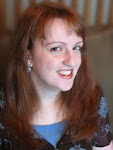Review by Kim Harris Thacker, writer, mommy, and Bookshop Talk
Host
Kimberly Willis Holt is known for tackling unique subjects well, and
THE WATER SEEKER is nothing if not unique. But it’s also a story as deep
and as pure as a good well. It’s a story of family, persistence, courage,
fear, and enduring love.
THE WATER SEEKER is atypical young adult fiction in that it begins
before the main character (Amos) is born and ends when he is a grown man with a
child of his own. Amos is not a perfect person. The people he loves
aren’t perfect either, nor are the people who love him (sometimes these aren’t
the same people). But that is part of what makes this incredible story so
believable. Another reason this is such a believable book is that it is a
work of well-research historical fiction, perfect for the person who is
interested in learning about early American pioneers. I have a lot of
pioneering ancestry, and I felt such a kinship to my predecessors as I read
this book, not only because I learned a lot about what life might have been
like for my ancestors, but because “family” is such a strong theme in this
book, one can’t help but reflect on and appreciate those who have gone before
us.
The prose in THE WATER SEEKER is spare, and perhaps because it is so
spare, it is also utterly striking. One of my favorite images comes from a
segment of the book where Amos is a part of a wagon train heading West from
Independence, Missouri along the Oregon Trail. Many of the pioneering
families brought treasured pieces of furniture with them in their wagons, but
soon realized their loads were too heavy for the trip. Amos sees a string
of pianos, trunks, chifforobes, and chests lining the trail, which cuts through
a sea of tall, green grass. Heartbreaking and gorgeous.
One last thing: Make sure you read this with a box of tissues on
hand. While there is plenty to chuckle about, there is even more to cry
about. Sometimes I even cried just because the language was so
beautiful...
Market: young adult, historical fiction
Language: mild
Sensuality: mild (a kiss; some romantic thoughts; allusions to
conception)
Violence: mild (I wouldn’t necessarily call the physical trauma
in this book violence, per se—it was mostly very tragic accidents and deaths
resulting from illness/childbirth)
Mature Themes: prejudice against Native Americans; death; abandonment; inability to bear children; physical hardship; poverty; abuse (All of these themes are handed so tastefully, but coping with tragedy in general is a big overall theme in this book—it is a book that, in my opinion, parents should read with preteens and sensitive teens.)
Book formats:






























